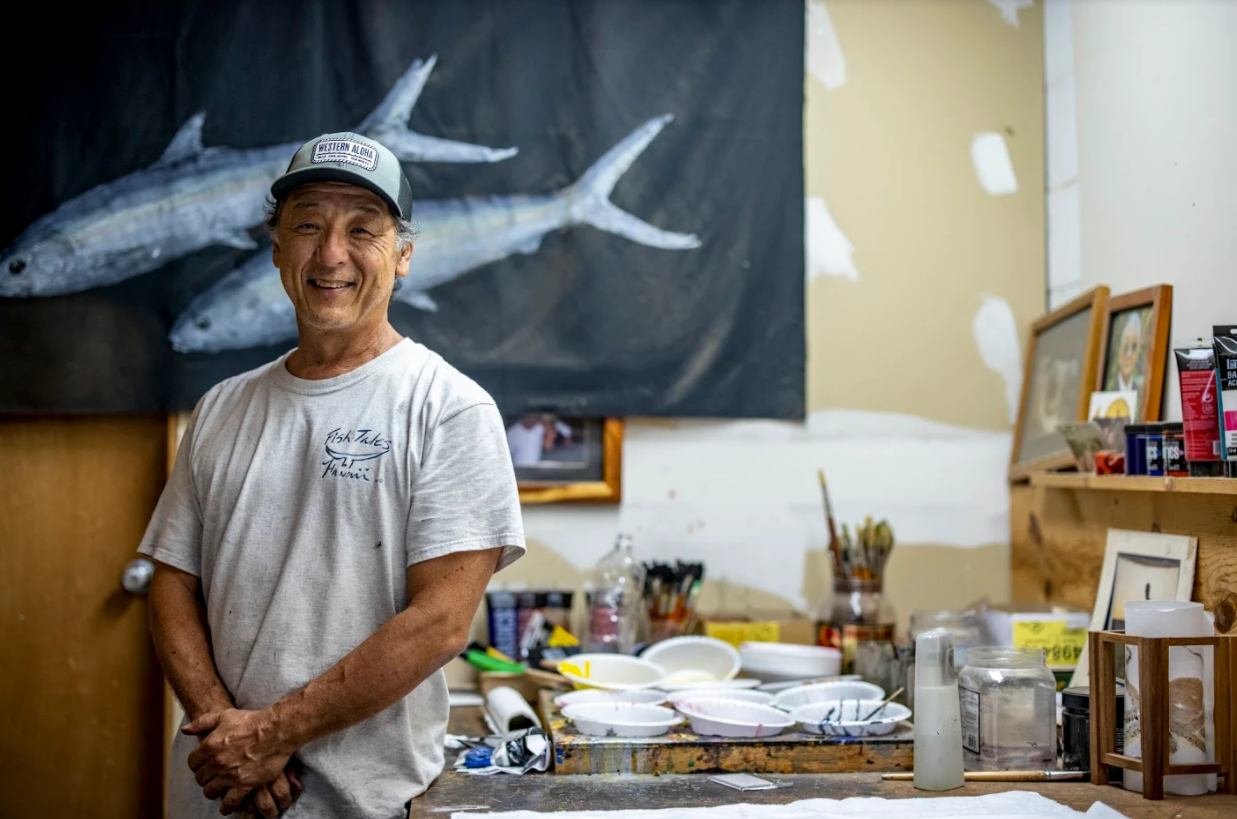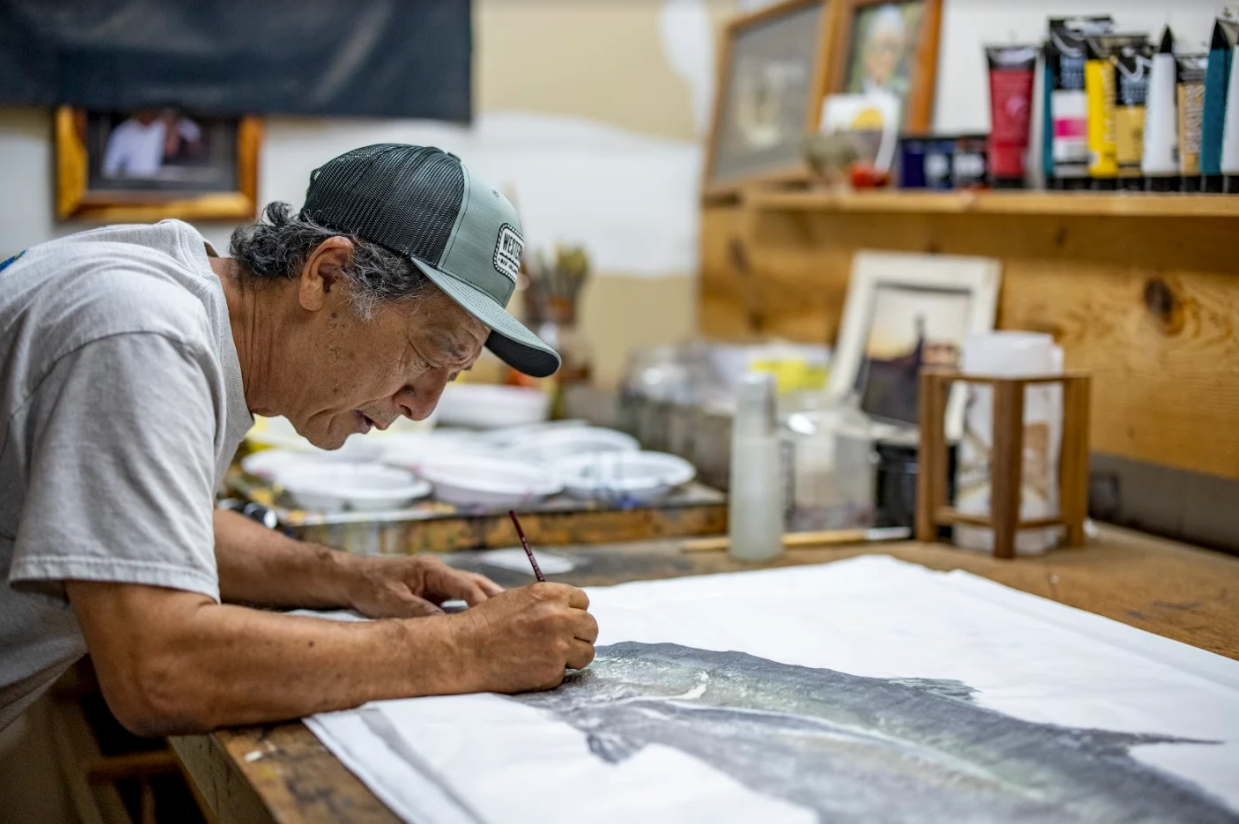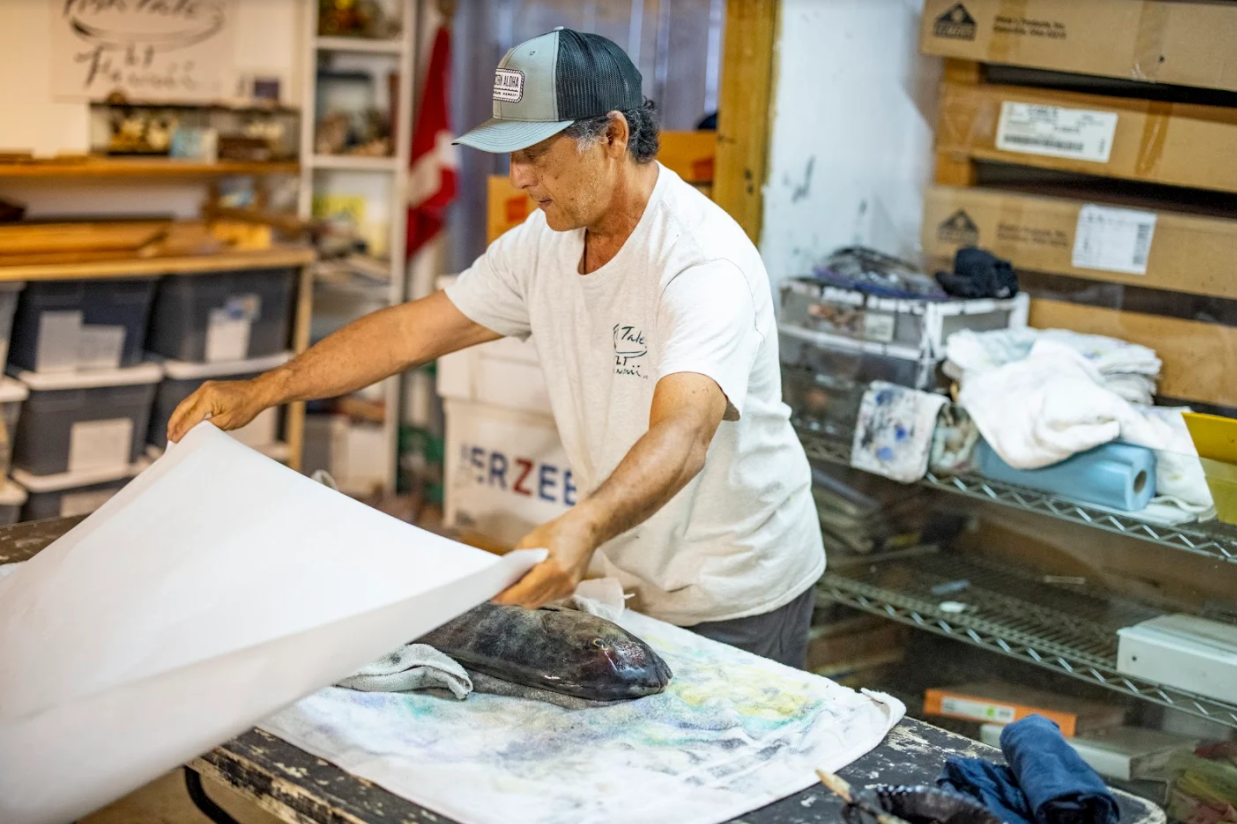NAOKI HAYASHI
O'ahu
Gyotaku Artist
With a deep respect and love for the ocean, Naoki Hayashi has an aptitude for transforming a fisherman’s catch into a riveting composition. Born in 1962 in Kyoto, Japan and raised on the Big Island by his hanai family in Hawi, North Kohala, he developed his passion for gyotaku art early on.
Q&A WITH NAOKI
Q: When & how did your love for the ocean begin?
A: When I first touched water at age of 6, I learned how to hold breath underwater before learning how to swim.
Q: Why do you think this craft from the mid-1800s is still alive and well today?
A: I think it's partly due to the simplicity and purity of the practice to document life's experience in accurate form to show the success of fishers, and to preserve the story.
Q: What is the most memorable gyotaku print you’ve ever made?
A: My most memorable impression is of the "ONO" head print, just the head because I shared the only fish we landed on the outing with my crew before we parted. This is the biggest "ONO" I speared while free diving.
Q: How long does it take you to make a typical print?
A: There is no "typical" print when it comes to my gyotaku practice. I print what nature provides, so there's numerous factors involved in the entire process. my objective is to capture the image as is, so the image can hold the "actual" story which can be enjoyed by the rest
Q: What was the artistic process behind the Ulua print for Western Aloha?
A: As always, I learn as much from the subject and try to capture the individual’s unique character to tell the story.
Q: What excites you the most about starting a new gyotaku print?
A: The new story.
Q: What are the different mediums you have experimented with?
A: Everything you can think of.
Q: Besides gyotaku printing, what is your favorite form of art?
A: Sketch, paint, photography, pottery, woodwork, choreography, cooking, or anything I can express my feelings and thoughts.
Q: Tell us a little about the process of creating your latest print for Western Aloha, “Keoni’s Catch”
A: First is to listen to the angler’s story in order to tune my mind into his lucky experience. And then, imagine what he went through in order to capture his story as accurately as I can on a clean sheet of shoji paper by means of this classic form of practice known as gyotaku.
Q: If you weren’t a gyotaku master, what would you be the master of?
A: To me, “master” is just a fancy word to describe a person who is willing to show value as an individual based on his or her character without hesitation or uncertainty.




